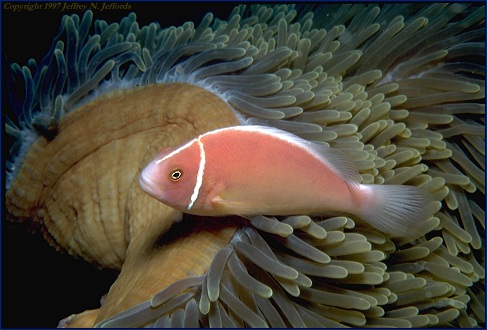 |
| Here's a close view of a Pink Anemonefish with its host
anemone. Each of the tentacles shown contain specialized stinging cells called nematocysts, which will sting on contact. Clownfish
have a special mucus layer on them that prevents them from being stung, and allows them to
hide among the tentacles of the anemone and avoid predators. Once a clownfish larvae has
settled in an anemone, it rarely travels more than a few feet away. The largest anemonefish in a group is usually the female. If the female dies or is removed, the next largest anemonefish (which was the male) becomes the female, in a type of sex reversal. The largest of the other anemonefish then becomes the breeding male. This adaptation assures more effective reproduction, since the adult doesn't have to leave the anemone looking for a mate or wait any longer than necessary for another mate to be available. Anemonefish Identification: Amphiprion perideraion Anemone Identification: Heteractis magnifica back to diver viewing anemonefish |
